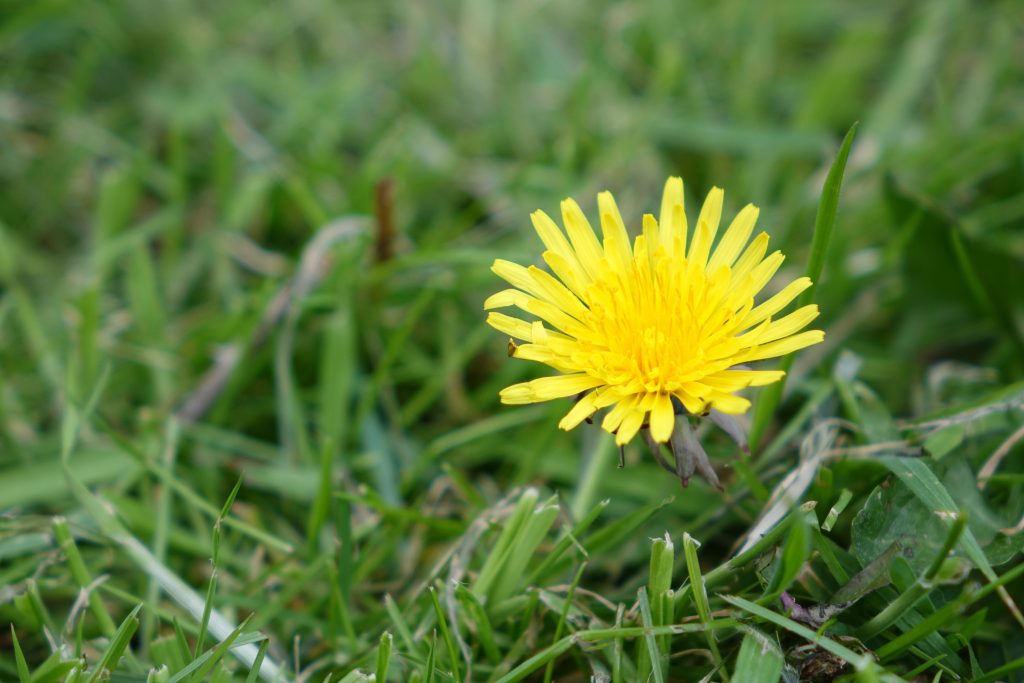Despite the Buzz, Forgo the ‘Low Mow’

By Karen Haave
“Low Mow May” seems to be gathering support in some towns, but it isn’t creating a buzz yet in Eastern Will County.
Also known as “No Mow May,” “Low Mow Spring,” “Low Mow till Mother’s Day,” the idea is to refrain from mowing lawns and fields in May to allow flowers and clover in lawns to “better accommodate the springtime propagation of flowering plants like clover and dandelions, as well as insects that serve as food for birds and pollinators for plants.”
The movement took root in Great Britain about six years ago when the conservation group Plantlife began promoting the effort to “secure a world rich in wild plants and fungi” to benefit the ecosystem.
In 2020, Appleton, Wisc., became the first municipality to adopt an ordinance regulating the practice.
But while local village officials favor giving the environment a boost, there are concerns about the results grass grown for a full month would bring.
For starters, it would be a real task to mow on June 1. Plus, while bees and butterflies love the tall grasses, so do mosquitoes, fleas and ticks.
And, by then, it would be just very unsightly.
“Our code says 8” is the tops, if I’m not mistaken,” Crete Village President Michael Einhorn said.
“If it gets taller than that, it will likely never be mowed again. Then what will those properties and the town look like? Take a look at the southeast corner of Herman and Vincennes and multiple that by 3,000 homes!
“Not what we are about in my way of thinking.”
In Peotone, Village Administrator Aimee Ingalls said 6 inches tall is the maximum height allowed for grass.
“Actually, I have never heard of (No Mow May),” she added. “Interesting. We do not as a Village participate, so we would do code enforcement accordingly.”
When asked about the movement, Monee Village Administrator Ruben Bautista said he wasn’t aware. So, he did a little research.
“After reading about this movement, here is what I can share. The administration understands and appreciates the ecological benefits of initiatives like No Mow May.
“However, our village code is designed to maintain standards of safety and aesthetics for all residents. While we encourage environmentally friendly practices, we also need to balance them with our existing Village Code.
“We are open to discussing how to accommodate residents who wish to participate in No Mow May while ensuring compliance with our village code. It’s important for us to find a solution that promotes both environmentally sound stewardship and community standards. Quite a balancing act, indeed.
“We are all for ecology and fostering native species and helping the planet. I feel more should be done for that. We also see the lazy man’s way to not mow the lawn – for a cause –then have a mess once it does get mowed.
“This administration would fully support prairie development and the natural ecosystem, and garden pollination.”
And it may not be worth all the trouble and mess anyway, said Nancy Kuhajda, U of I Extension Program Coordinator for Will County.
“’No Mow May’ sounds like a catchy, nature friendly practice of vowing to not mow your lawn in May to allow the weeds to flower for the pollinators, but I suggest no mow is a NO GO here in Northern Illinois.
“’No mow’ any time the grass is growing creates a very bad scenario for the turf itself. Our turfgrass should be allowed to grow to 3 or 4 inches. But then then it should be mowed so as not to remove more than one-third of the blade to keep it at its healthiest.”
Not mowing during the prime cool-season, grass-growing season would leave lawns weak and overgrown, Kuhajda added.
“The grass would be so tall it might even hide those pollinator friendly flowers on the weeds, which is the whole point of ‘No Mow May.’ And growing grass tall does nothing for pollinators, especially if there are no flowering weeds for them.
“Better to mow regularly and wait to do any weed killer applications until Memorial Day. That gives the pollinators the flower buffet of dandelions, creeping Charlie and the like.
“By the end of May, other flower sources are starting to come out. And maybe start thinking of your lawn as just a mix of turf and flowers all the time. The pollinators will be so glad.”
Karen Haave is a freelance reporter. Editor Nick Reiher contributed to this story.
